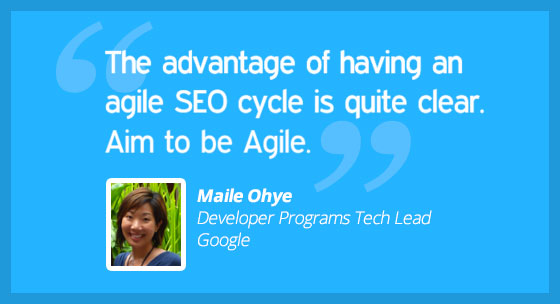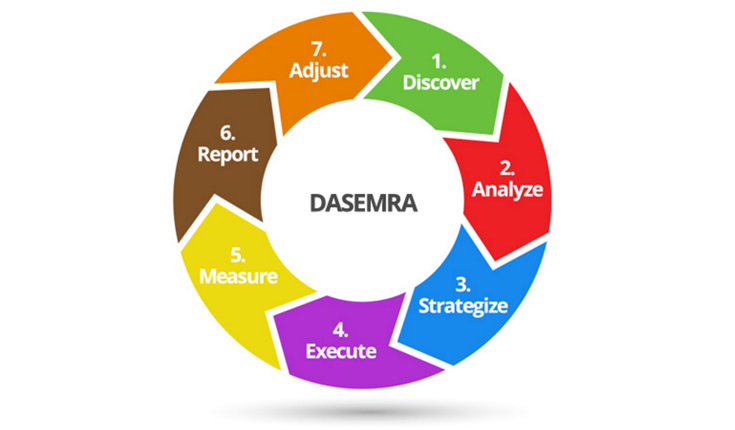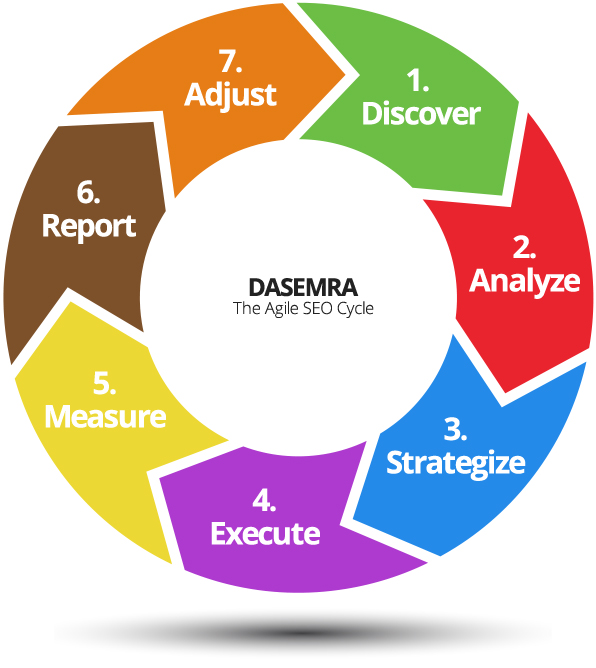- Backlinks Explained: Why Your Backlinks Aren’t Paying Off - April 10, 2024
- Boost Your Agency’s Credibility: A Guide to Online Reputation - April 10, 2024
- URL Slugs for SEO: A Comprehensive Guide - April 10, 2024
This post discusses how and why your agency should perform agile SEO. I wrote this post because I don’t see enough SEO professionals performing agile SEO. I was guilty in my early years of not performing agile SEO; however, the day my agency started implementing an agile SEO, was the day we started signing and keeping more clients.
But don’t take my word for it. In 2012, Maile Ohye (Developer Programs Tech lead at Google) released a video where she discusses 5 Common Mistakes in SEO. The 5th common mistake she identifies is not performing “agile SEO”.

What is Agile SEO?
The word “agile” means to move quickly, efficiently and effectively. However in this case, “agile SEO” is a method or process of performing SEO that is quick, efficient, and effective. In any type of agile development, including agile SEO, the method or process should be repeated.
Normally when we discuss agile methods in the the tech industry, we’re often referring to software development. In this case where discussing SEO, which has very similar parallels to software development.
It’s important to note that agile SEO can have different steps and methods, so some companies may vary on how they execute agile SEO. That important thing is that the process is agile.
Why Perform Agile SEO?
SEO is not an exact science. It grows, changes and evolves over time. Therefore, it’s important to have a flexible SEO strategy that considers the constant evolution of SEO.

My 7-Step Agile SEO Cycle
This is the 7 step agile SEO cycle I developed it for my team at The Ocean Agency. I call it DASEMRA (pronounced “da -sem-ra”) for short, after the acronym. It’s mandatory at our agency that everyone knows it, uses it, and repeats this cycle for each of our clients.
1. Discover
 Before you start performing SEO, have an in-depth conversation with your client. Determine the site’s purpose. Identify primary and secondary conversion points, events, and metrics that your client defines as success. Keep in mind, each client is different. For example the goal of a blog may be to get more traffic; where as the goal for a graphic t-shirt company would be to get more e-commerce sales.
Before you start performing SEO, have an in-depth conversation with your client. Determine the site’s purpose. Identify primary and secondary conversion points, events, and metrics that your client defines as success. Keep in mind, each client is different. For example the goal of a blog may be to get more traffic; where as the goal for a graphic t-shirt company would be to get more e-commerce sales.
2. Analyze
 Review the entire site inside and out. Perform manual and automated SEO audits. Look thoroughly at their analytics and any other marketing software they may have installed. In all, get to know the site.
Review the entire site inside and out. Perform manual and automated SEO audits. Look thoroughly at their analytics and any other marketing software they may have installed. In all, get to know the site.
3. Strategize
 Develop your short term and long term plan. What needs to be done to the site and landing pages to better optimize them? Determine how you are going to grow the site’s authority. Identify ways you are going to earn links and shares. Make checklists for every single detail you plan on executing. Create content calendars and plan out your topics.
Develop your short term and long term plan. What needs to be done to the site and landing pages to better optimize them? Determine how you are going to grow the site’s authority. Identify ways you are going to earn links and shares. Make checklists for every single detail you plan on executing. Create content calendars and plan out your topics.
4. Execute
 Start executing the SEO strategy laid out in the previous step. Follow the plan and use the checklist so nothing slips through the cracks.
Start executing the SEO strategy laid out in the previous step. Follow the plan and use the checklist so nothing slips through the cracks.
5. Measure
 Thoroughly understand the impact of your SEO campaign. Most importantly look for value. Never underestimate the value of any metric. Something small to you could mean the world to your client. So measure everything.
Thoroughly understand the impact of your SEO campaign. Most importantly look for value. Never underestimate the value of any metric. Something small to you could mean the world to your client. So measure everything.
6. Report
 Clearly communicate the impact of your SEO to your client in a simple but effective manner. Most importantly, don’t forget to communicate the value you found in the previous step. Make the client remember why they pay you.
Clearly communicate the impact of your SEO to your client in a simple but effective manner. Most importantly, don’t forget to communicate the value you found in the previous step. Make the client remember why they pay you.
7. Adjust
 Remember what Google says about SEO, “The only constant thing about SEO is that it is not constant.” You need to identify the weaknesses of your campaign and make strategic adjustments to improve them. You also need to identify the successes of your SEO campaign and build on them.
Remember what Google says about SEO, “The only constant thing about SEO is that it is not constant.” You need to identify the weaknesses of your campaign and make strategic adjustments to improve them. You also need to identify the successes of your SEO campaign and build on them.
Repeat
———————–
Key Takeaways
1. “Aim to be agile” ~ Maile Ohye of Google
2. “The only constant thing about SEO is that is not constant” ~ Google
3. Add the Agile SEO Cycle to your SEO contract
4. Impress your prospective clients by telling them you perform Agile SEO
5. DASEMRA stands for Discover, Analyze, Strategize, Execute, Measure, Report, Adjust.
Share The Agile SEO Cycle
Conclusion
Every serious SEO agency or contractor should perform Agile SEO. Not because I’m telling you to, but because Google is telling you to as well. Teach it to your team the Agile SEO method and make it mandatory.

